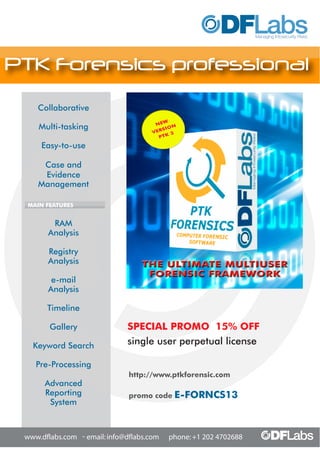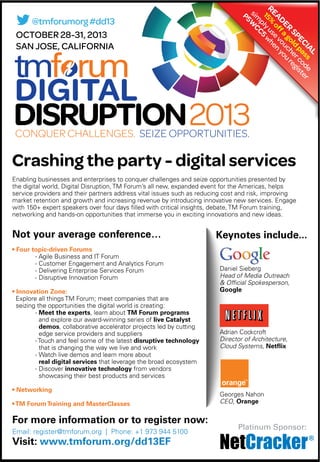Windows FE (Forensic Environment) allows forensic examiners to boot an evidence machine to Windows instead of Linux or other operating systems. This allows examiners to use their familiar Windows-based forensic tools rather than needing to learn Linux applications. Windows FE is based on Windows PE (Preinstallation Environment) but is designed for forensic analysis, where Windows PE is for system preparation and installation. Booting to Windows FE preserves evidence better than hardware write blocking and allows examiners to efficiently image, triage, and examine evidence machines using their preferred Windows software tools.
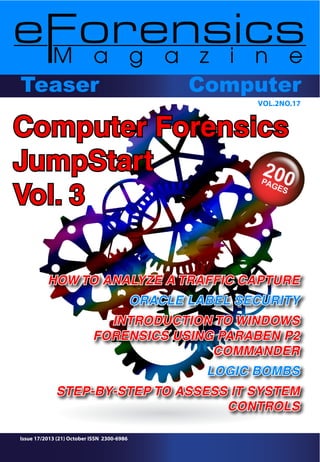
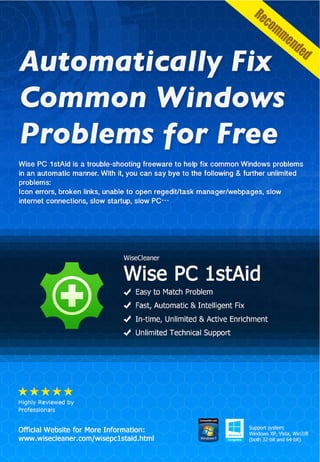









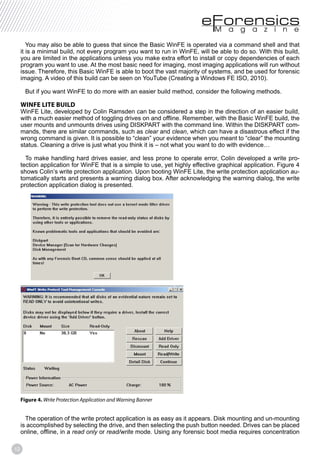
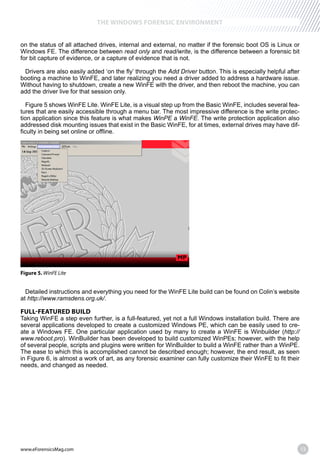




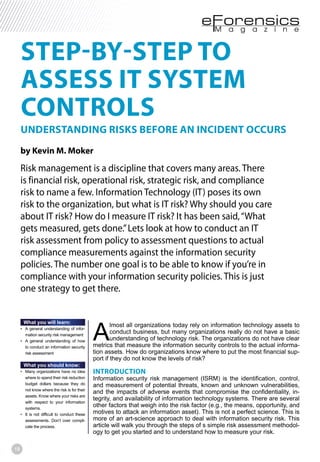


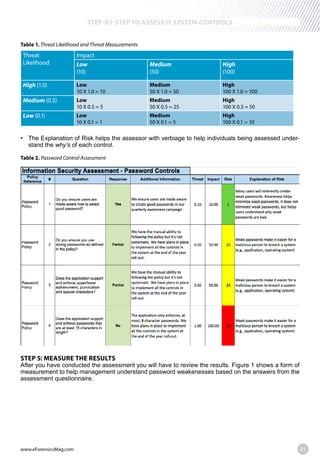

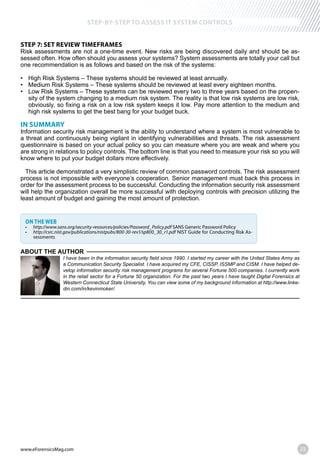
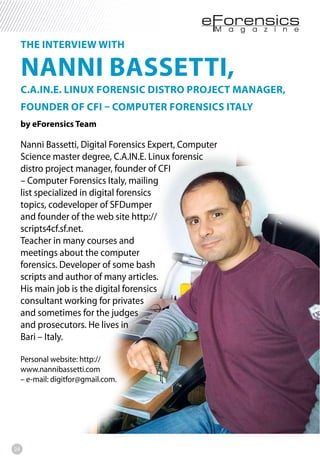


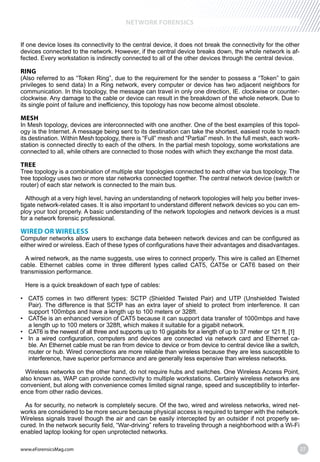
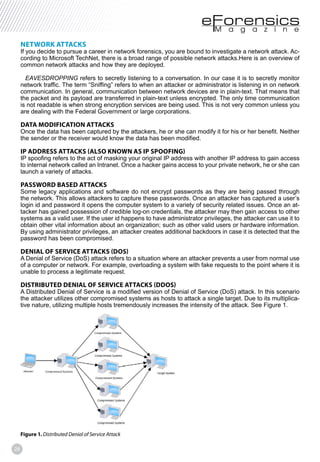


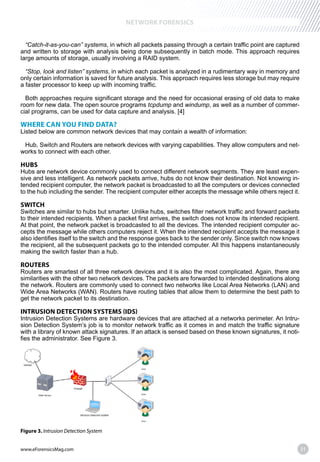
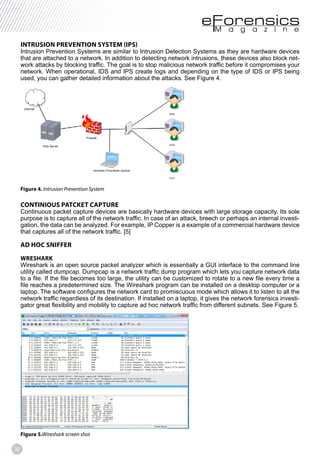
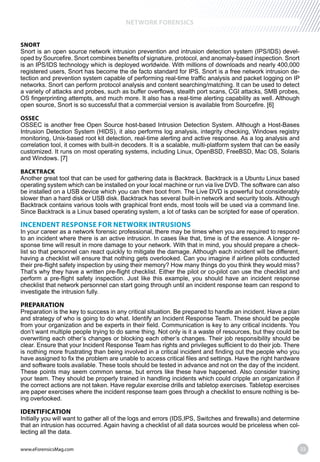


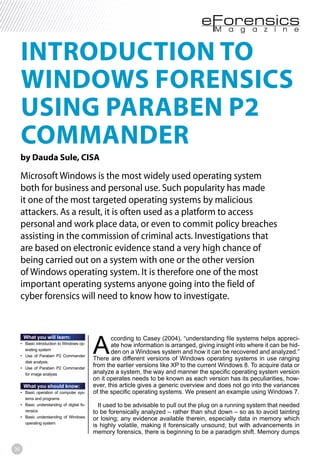










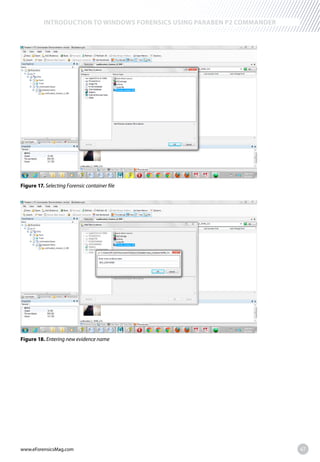



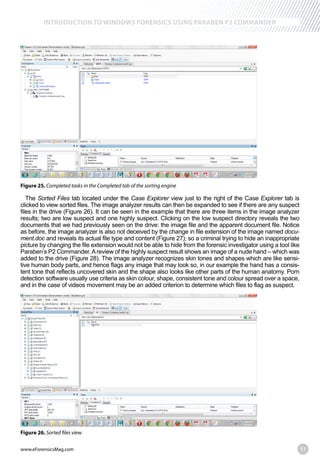
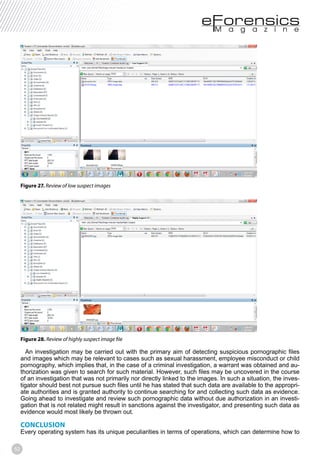
![www.eForensicsMag.com 53
INTRODUCTION TO WINDOWS FORENSICS USING PARABEN P2 COMMANDER
go about investigating it successfully. An investigator needs to be familiar with the operating system(s) on
suspect machines that need to be investigated for evidence in any case to ensure evidence is properly
and reasonably collected in a forensically sound manner. Windows is a very commonly used operating
system, and therefore digital forensics investigators need to be familiar with the operating system and
tools for investigating and analyzing it. There are many digital forensic investigation tools available, ma-
ny of them can be used across multiple platform and operating systems, especially Microsoft Windows.
Paraben’s P2 Commander is quite robust and is very effective for many investigations that will need to
be carried out on Windows systems.
Digital forensic tools continue to evolve as technology and the bad guys evolve in a bid to tackle digital
crimes and offenses. Techniques used by offenders to mask their wicked activities can be unmasked with
digital forensic tools (like trying to hide files by changing file extension). However, the tools might tend to
be developed after-the-fact as the bad guys usually tend to be a couple of steps ahead in terms of tech-
nology, they are always constantly working to beat any development that has been made to track and
apprehend them. That notwithstanding, digital forensic tools are still equal to the task of catching most
offenders, and as stated continue to evolve to meet up with new challenges.
REFERENCES
2nd ed. Elsevier Academic press.
How Operating Systems Work [Online]. Available from:
(Accessed: 30 July 2013).
How NTFS Works [Online]. Availble from:
(Accessed: 30 July 2013).
[Online]. Available from:
(Accessed: 30 July 2013).
ABOUT THE AUTHOR
Dauda Sule, CISA. He is currently the Marketing Manager of Audit Associates Limited which is a consultancy firm that special-
izes in designing and organizing training programs pertaining to auditing, fraud detection and prevention, information security
and assurance, and anti-money laundering. He is a CISA and has an M.Sc. in Computer Security from the University of Liv-
erpool. Dauda also has a first degree black belt in Taekwondo. He has previous experience of over five years in the Nigerian
Banking industry, and also did some time in Gtech Computers (a computer and allied services company) as a systems security
and assurance supervisor.](https://image.slidesharecdn.com/06086080-5950-4d25-8649-f3d3bc8c0953-161025173447/85/eForensics_17_2013_KMOKER-53-320.jpg)
